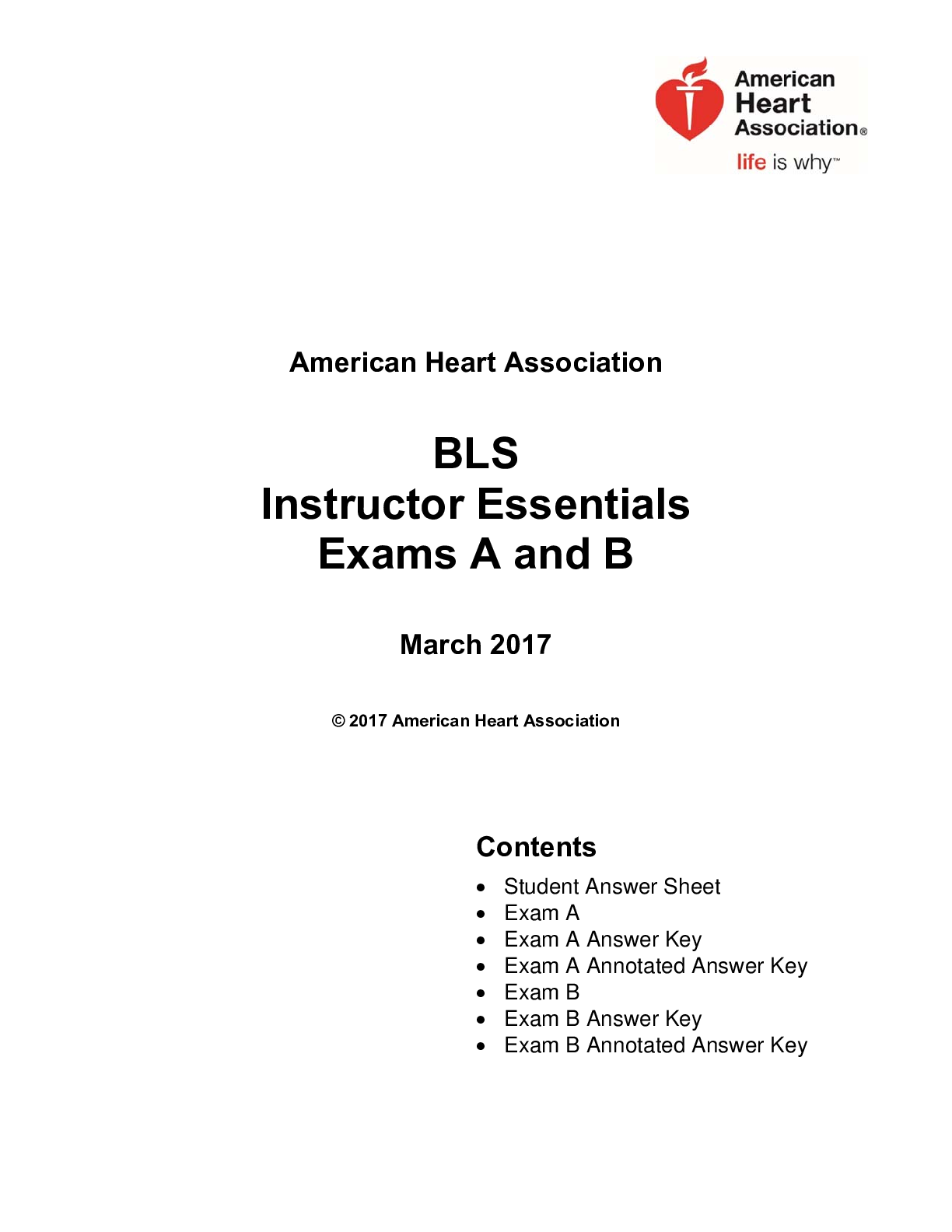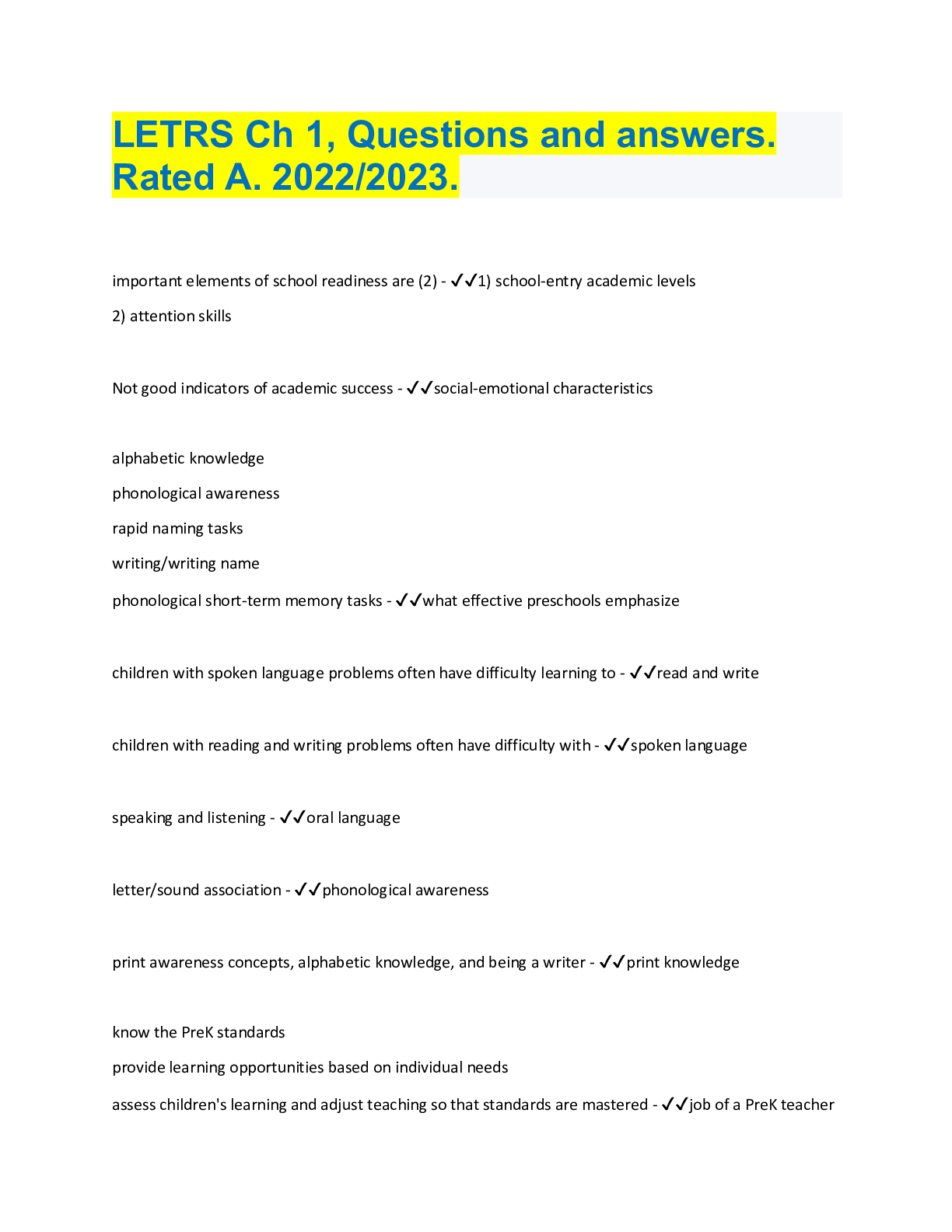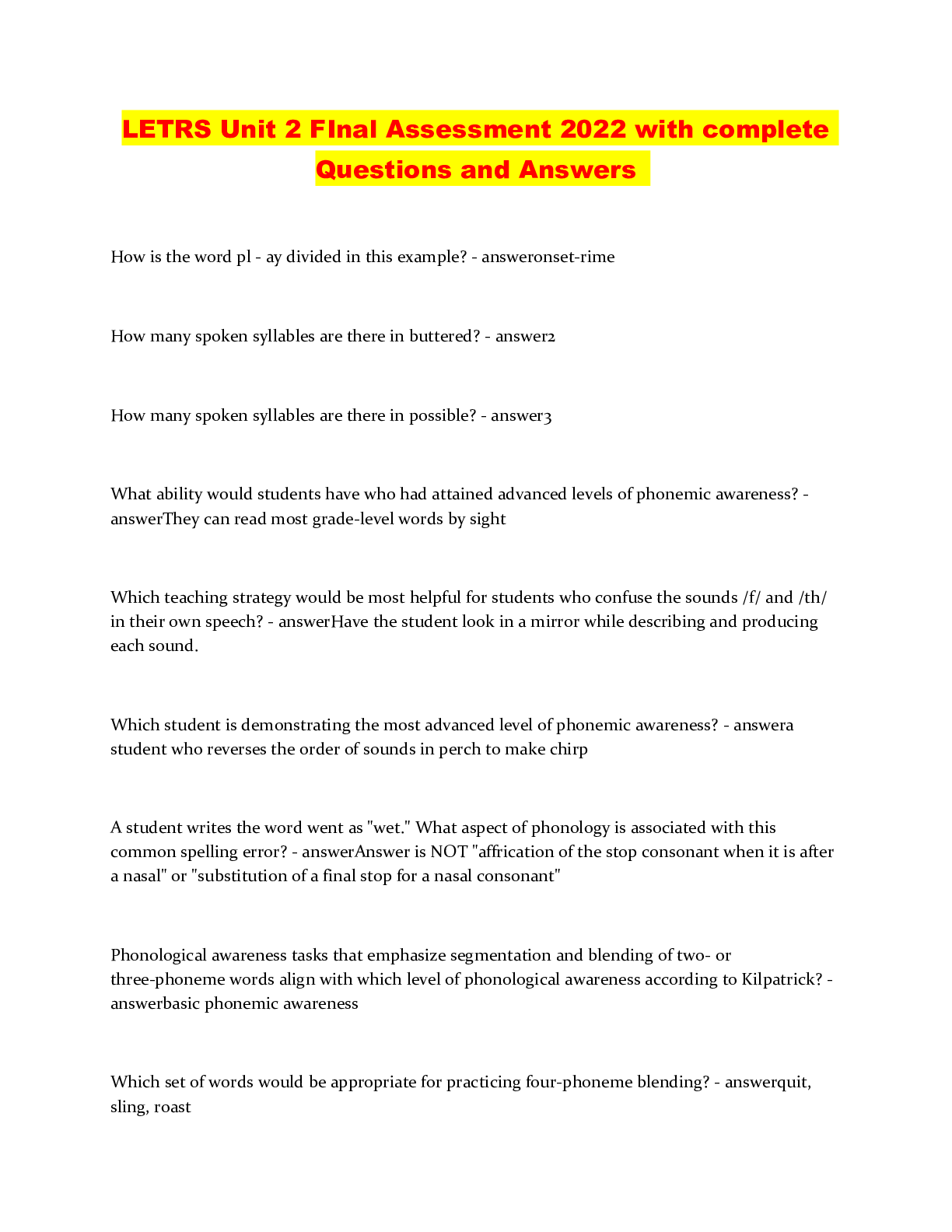Health Computing > QUESTIONS & ANSWERS > AAPC CPC Practice Exam F- Questions and Answers Already Passed (All)
AAPC CPC Practice Exam F- Questions and Answers Already Passed
Document Content and Description Below
AAPC CPC Practice Exam F Questions and Answers Already Passed What is the patient's right when it involves making changes in the personal medical record? A. Patient must work through an attorney to... revise any portion of the personal medical information. B. They should be able to obtain copies of the medical record and request corrections of errors and mistakes. C. It is a violation of federal health care law to revise a patient medical record. D. Revision of the patient medical record depends solely on the facility's compliance program policy. ✔✔B. They should be able to obtain copies of the medical record and request corrections of errors and mistakes. Under HIPAA regulations, patients have the right to receive a copy of their medical record and request that errors are corrected. https://www.hhs.gov/hipaa/for-individuals/medical-records/index.html Which modifier is appended to a CPT®, for which the provider had a patient sign an Advance Beneficiary Notice (ABN) form because there is a possibility the service may be denied because the patient's diagnosis might not meet medical necessity for the covered service? A. GJ B. GA C. GB D. GY ✔✔B. GA An Advance Beneficiary Notice (ABN) is a waiver of liability. When a patient has been informed a service that is otherwise covered by Medicare but might not be covered in a particular instance an ABN is signed by the patient prior to receiving the service. To inform Medicare the ABN has been signed, append modifier GA. If an ABN is signed, the claim is the patient's responsibility if the claim is denied. This modifier is listed in the HCPCS Level II codebook. Which statement regarding an ICD-10-CM coding conventions is TRUE? A. If the same condition is described as both acute and chronic and separate subentries exist in the Alphabetic Index at the same indentation level, code only the acute condition. B. Sequela (Late effect) codes are reported for a current acute phase of the injury or illness C. An ICD-10-CM code is still valid even if it has not been coded to the full number of characters required for that code. D. Signs and symptoms that are integral to the disease process should not be assigned as additional codes, unless otherwise instructed. ✔✔D. Signs and symptoms that are integral to the disease process should not be assigned as additional codes, unless otherwise instructed. Multiple choice D is the correct answer, according to the ICD-10-CM Official Coding Guidelines, I.B.5. indicates not to report signs and symptoms that are integral to a definitive diagnosis and are not assigned unless otherwise instructed. When the same condition is diagnosed as acute and chronic and there is a separate code for both, report both codes (I.B.8). Sequela (Late Effect) codes are the residual effect (condition produced) after the acute phase of an illness or injury has terminated (I.B.10). An ICD-10-CM code is not valid unless it is coded to the highest level of specificity. Do not rely solely on the ICD-10-CM Alphabetic Index to Diseases and Injuries to select the correct code. The term paracentesis found in CPT® code 49082 means: A. A procedure performed to drain fluid that has accumulated in the abdominal cavity B. Biopsy of an abdominal mass C. Removal of tissue samples from the abdominal cavity by an open approach D. Removal of a cyst located in the abdominal cavity ✔✔A. A procedure performed to drain fluid that has accumulated in the abdominal cavity The term breaks down as follows: prefix par or para refers near, beside or outside and the suffix - centesis refers to puncture or insertion of the insertion of a needle to withdraw fluids. As it relates to code 49082 the surgical procedure is performed by inserting a needle in the abdominal (peritoneal) cavity to drain fluid that has accumulated, or to obtain a fluid sample for testing. hich term is one who has an overload of sodium? A. Hyperkalemia B. Hyperpotassemia C. Hypernatremia D. Hypercalcemia ✔✔C. Hypernatremia In the ICD-10-CM Alphabetic Index look for each of the listed terms. Cross reference each code in the Tabular List to note a brief definition. Hypernatremia is the when one has too much sodium in the system. Hypernatremia is indexed to code E87.0. Complete this series: Pulmonary, Aortic, Mitral, and ________are valves of the heart. A. Tricuspid B. Superior Vena Cava C. Carotid D. Atrium ✔✔A. Tricuspid Tricuspid is the first heart valve that blood encounters as it enters into the heart. Superior Vena Cava is a vein that returns blood to the heart from the head, neck and both upper extremities. Carotid is a major artery located in the front of the neck. Atrium is one of the two upper receiving chambers of the heart. An illustration of the heart is found in the Professional Edition of the CPT® codebook in the Cardiovascular System Table of Contents or look in the CPT® Index for Valve and you will note a complete valve listing. Which one of the following is a disorder in causing paralysis of the facial nerve? A. Exotropia B. Tarsal tunnel syndrome C. Brachial plexus lesions D. Bell's palsy ✔✔D. Bell's palsy Exotropia is an outward deviation of the eye. The muscles of the eye are controlled by the fourth cranial nerve. The facial nerve is the seventh cranial nerve. This distinction can be found in illustrations and written information within your ICD-10-CM and CPT® codebooks. Tarsal tunnel syndrome is nerve impingement in the foot, and brachial plexus lesions refer to a complex of nerves found between the neck and armpit. Bell's palsy, is a common disorder of the facial nerve, and causes an inability to control facial muscles of expression. It may be caused by a brain tumor, stroke, or Lyme disease, but can be idiopathic and transient. In the ICD-10-CM Alphabetic Index look for Palsy/Bell's (see also Palsy, facial). What is ascites? A. Fluid in the abdomen B. Enlarged liver and spleen C. Abdominal malignancy D. Abdominal tenderness ✔✔A. Fluid in the abdomen In ascites, fluid collects in the peritoneal cavity of the abdomen. Ascites is typically caused by cirrhosis, malignancy, or heart failure. It is usually managed medically but may be treated with paracentesis. Look in the ICD-10-CM Alphabetic Index for Ascites (abdominal) referring you to code R18.8. In the Tabular List under category code R18 the includes note indicates: Fluid in peritoneal cavity. A person who has nephritis has inflammation in what location? A. Gallbladder B. Nerve C. Uterus D. Kidney ✔✔D. Kidney The term breaks down as: Nephr/o refers to kidney and the suffix -itis refers to inflammation. Nephritis is inflammation of the kidney. In the ICD-10-CM Alphabetic Index look for Inflammation/kidney-see Nephritis. CKD is a disease of which system? A. Circulatory B. Genitourinary C. Digestive D. Musculoskeletal ✔✔B. Genitourinary CKD is the abbreviation for Chronic Kidney Disease. The abbreviation is found in the ICD-10- CM Tabular List for category code N18 which falls under the Genitourinary System. [Show More]
Last updated: 1 week ago
Preview 1 out of 5 pages
.png)
Reviews( 0 )
Document information
Connected school, study & course
About the document
Uploaded On
Sep 22, 2022
Number of pages
5
Written in
Additional information
This document has been written for:
Uploaded
Sep 22, 2022
Downloads
0
Views
173
.png)

.png)
.png)
.png)
.png)
.png)
.png)
.png)
.png)
.png)
.png)
.png)

.png)

.png)
.png)









.png)
.png)

